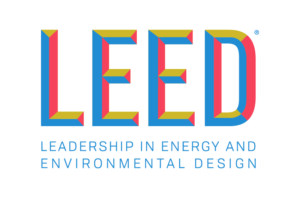What is LEED?

Leadership of Energy & Environmental Design, also known as LEED, is the globally recognized standard for green buildings. LEED certification has been in the marketplace for almost 30 years, and it is used in more than 100 countries—with billions of square meters of space certified to date! Unlike many other green building programs, LEED considers a building’s entire life cycle, including raw materials used, transportation distance, community engagement, operational efficiency, and its end of life. With programs available for commercial buildings, multi-family structures, homes, interiors, existing buildings, and cities, criteria and prerequisites depend on the type of LEED certification being sought.
Each type of LEED certification comprises both prerequisites and credits organized across several sustainability categories. Prerequisites are required elements and/or green building strategies that must be included in any LEED-certified project. Credits are optional elements that projects can pursue to gain points toward LEED certification.
Although prerequisites and credits vary depending on the building type and associated rating system, LEED is generally organized into the following credit categories:
- Integrative process
- Location and transportation
- Sustainable sites
- Water
- Energy
- Materials and resources
- Indoor environmental quality
- Innovation and Pilot Credits
Achieving LEED certification requires meeting all prerequisites and earning a minimum number of credits/points. The levels of certification generally follow the below thresholds:
- Certified: 40–49 points
- Silver: 50–59 points
- Gold: 60–79 points
- Platinum: 80+ points
As of 2023, the most common versions of LEED are v4 and v4.1. In general, credits can be mixed and matched between the two standards.
For more information about LEED, its program, and credit areas, please visit https://www.usgbc.org/credits